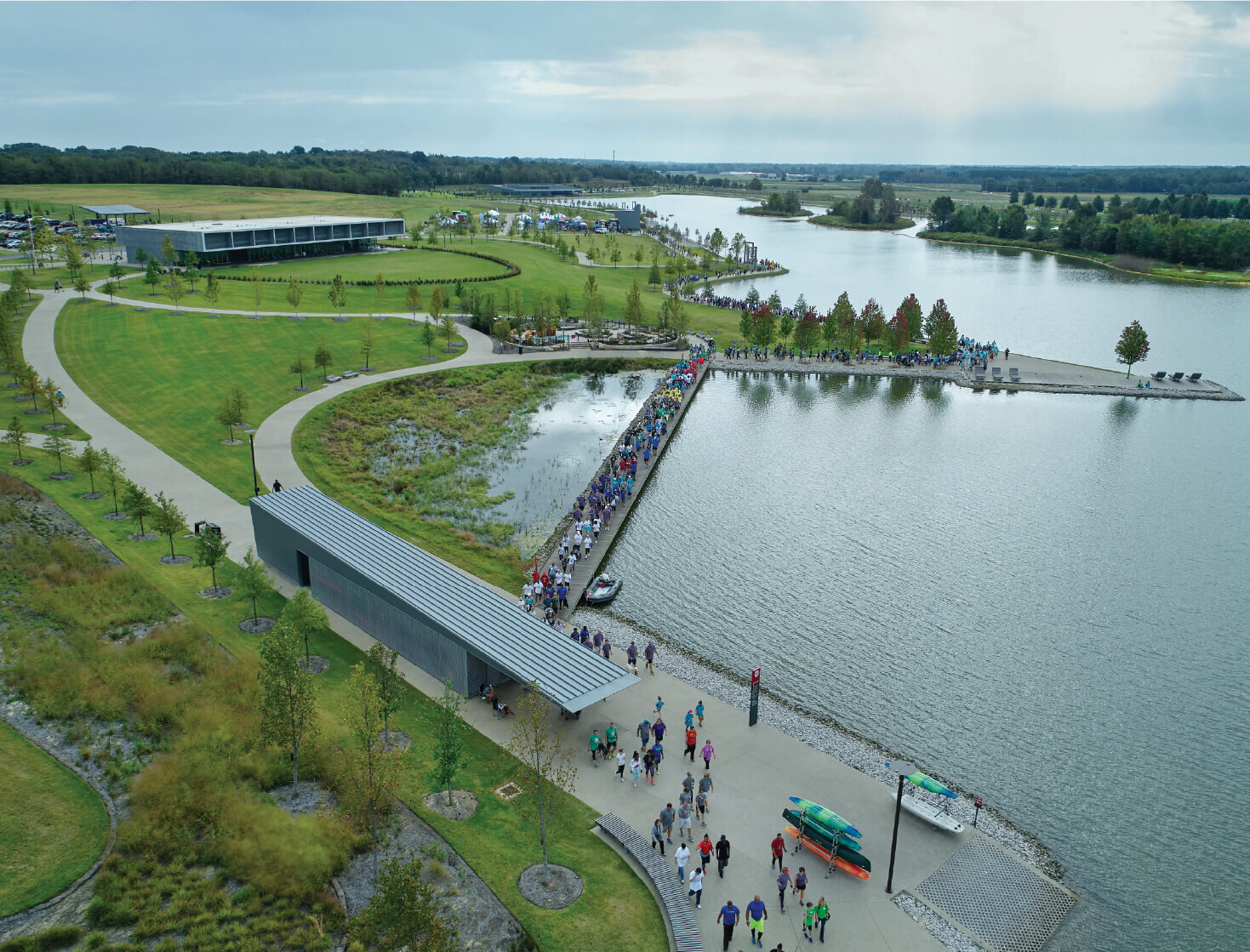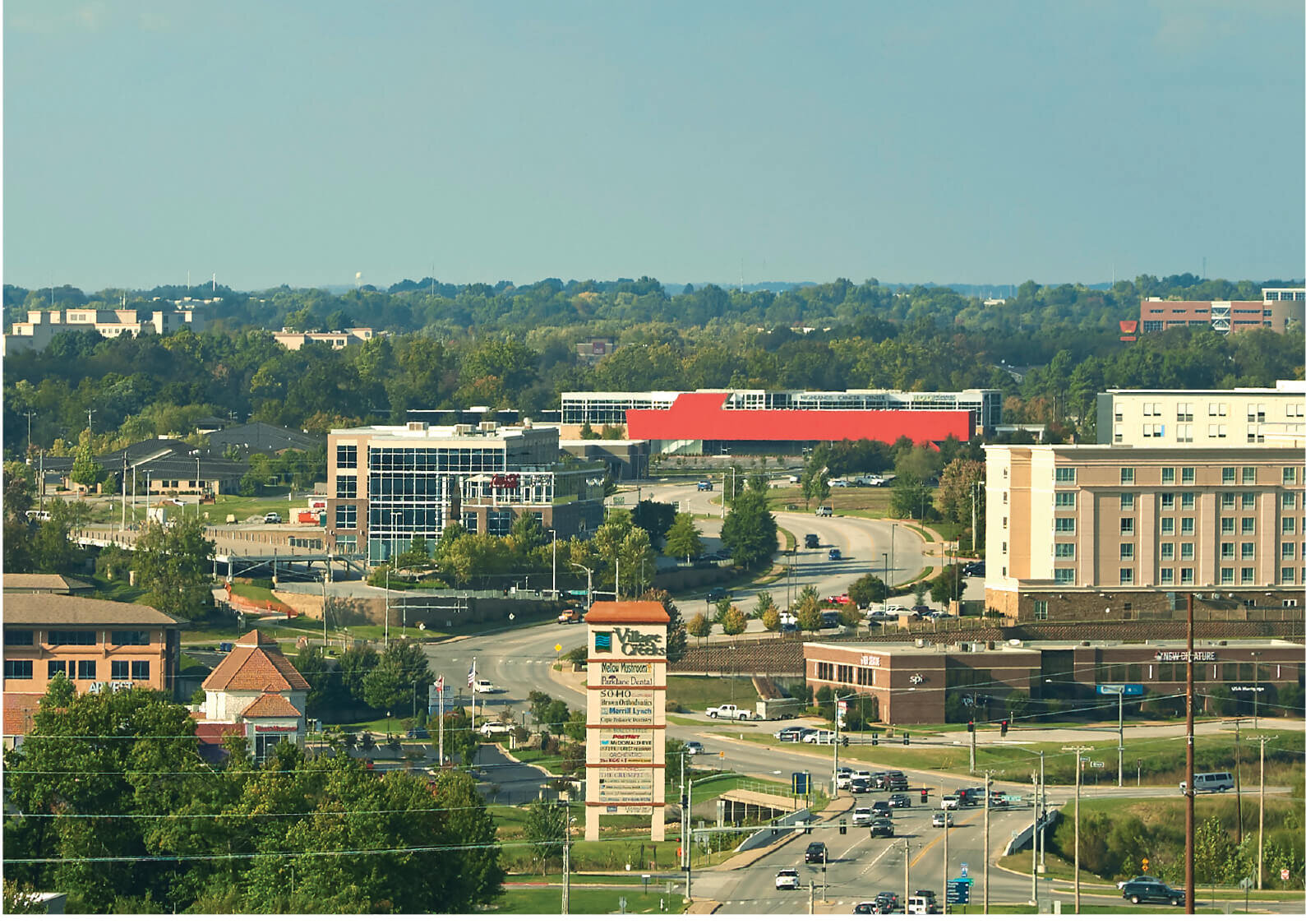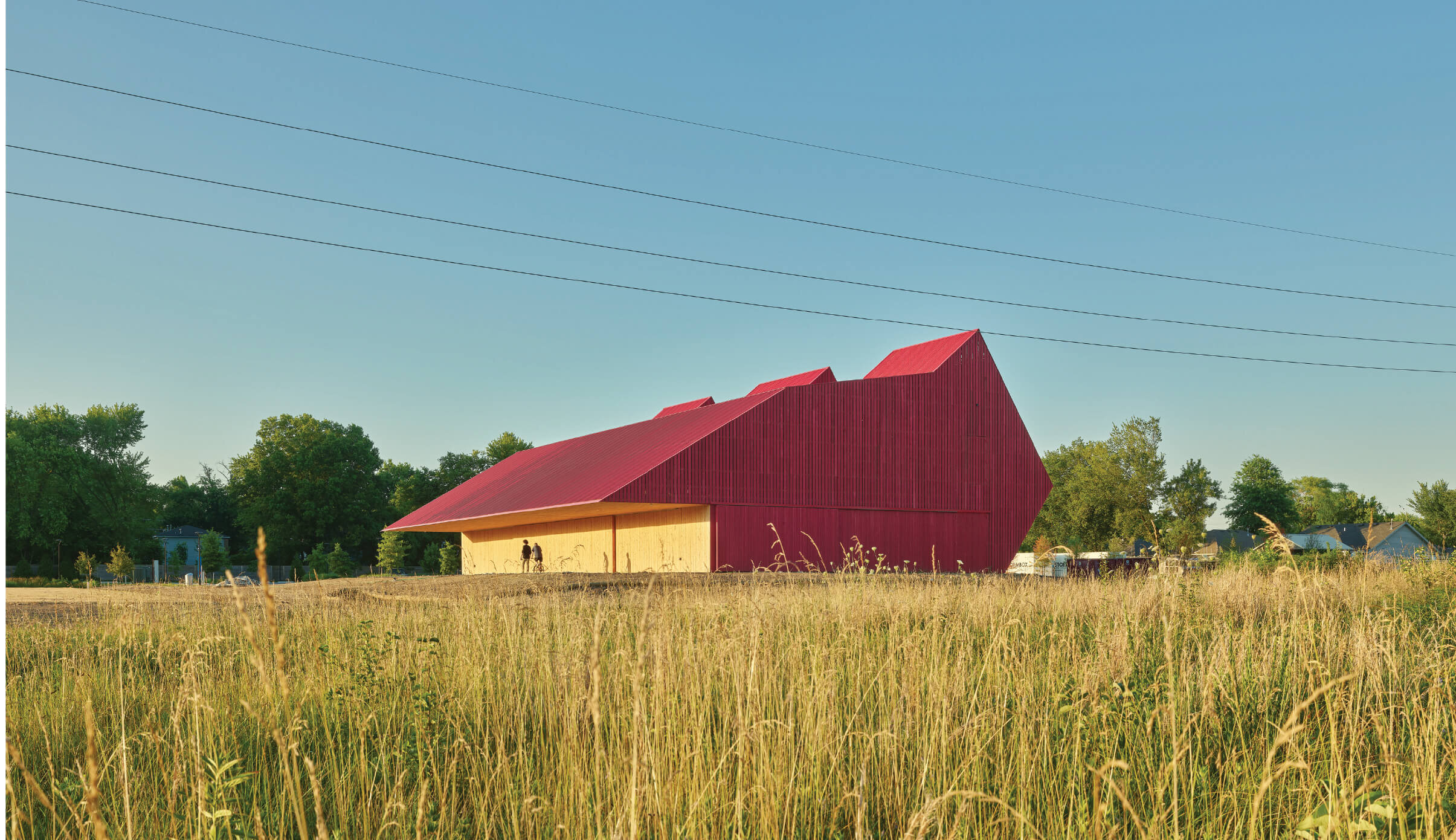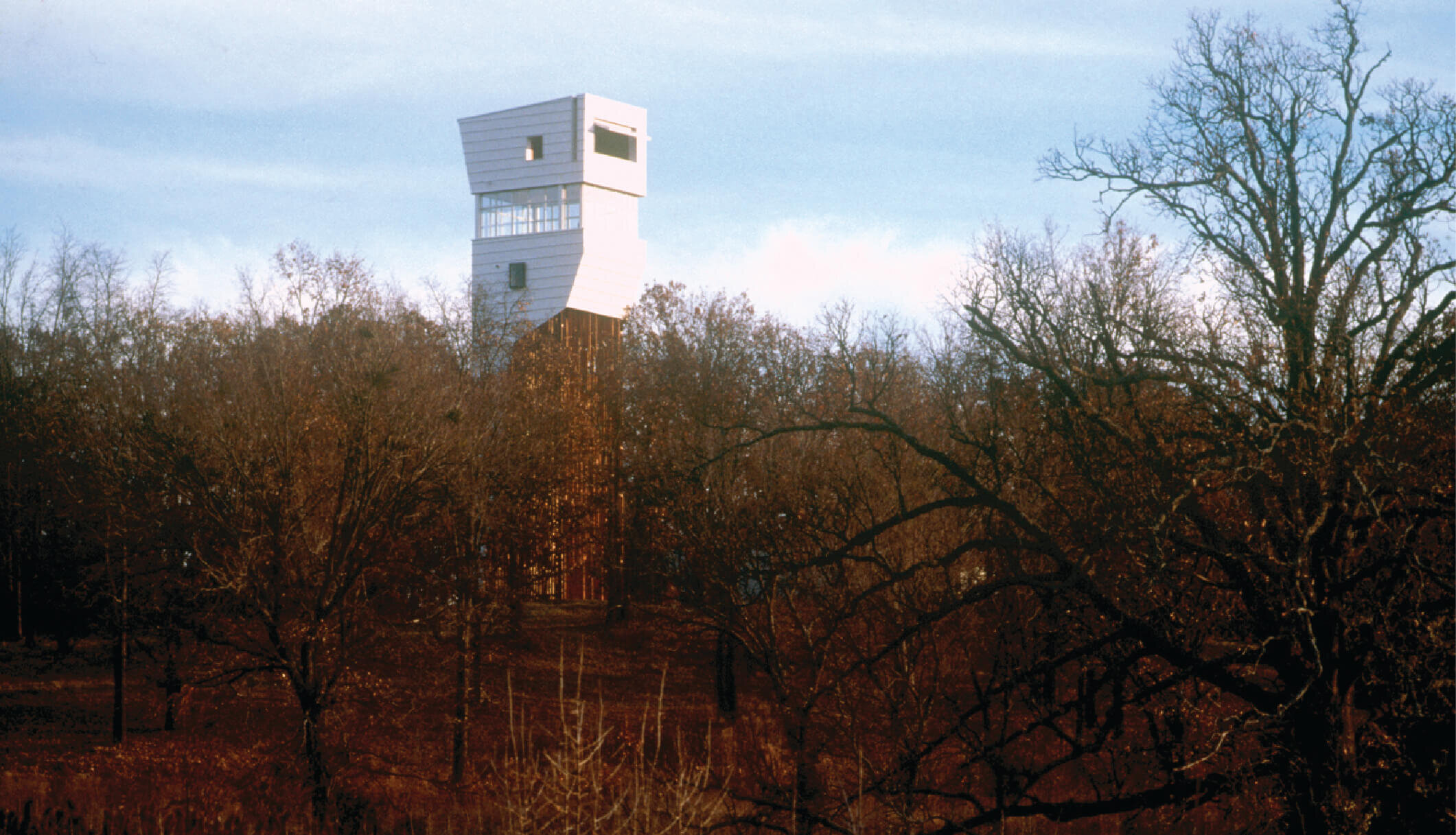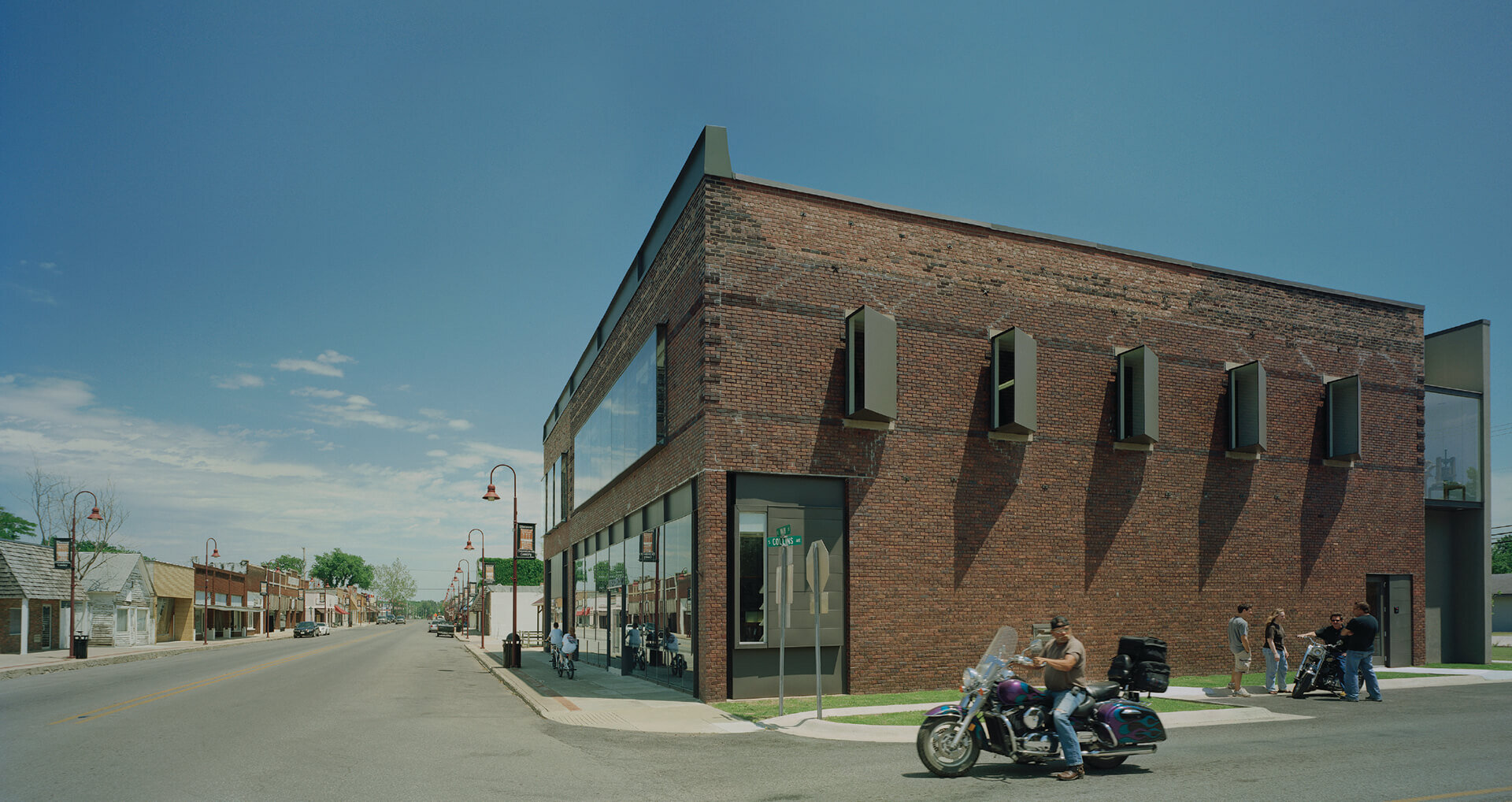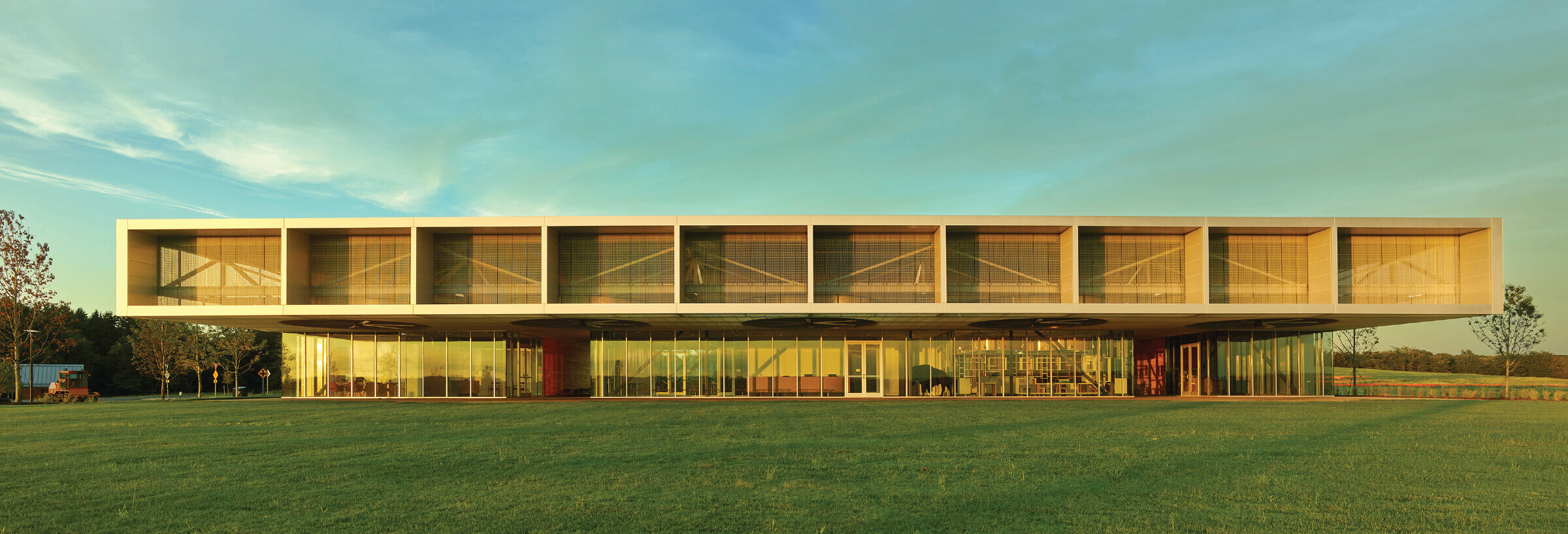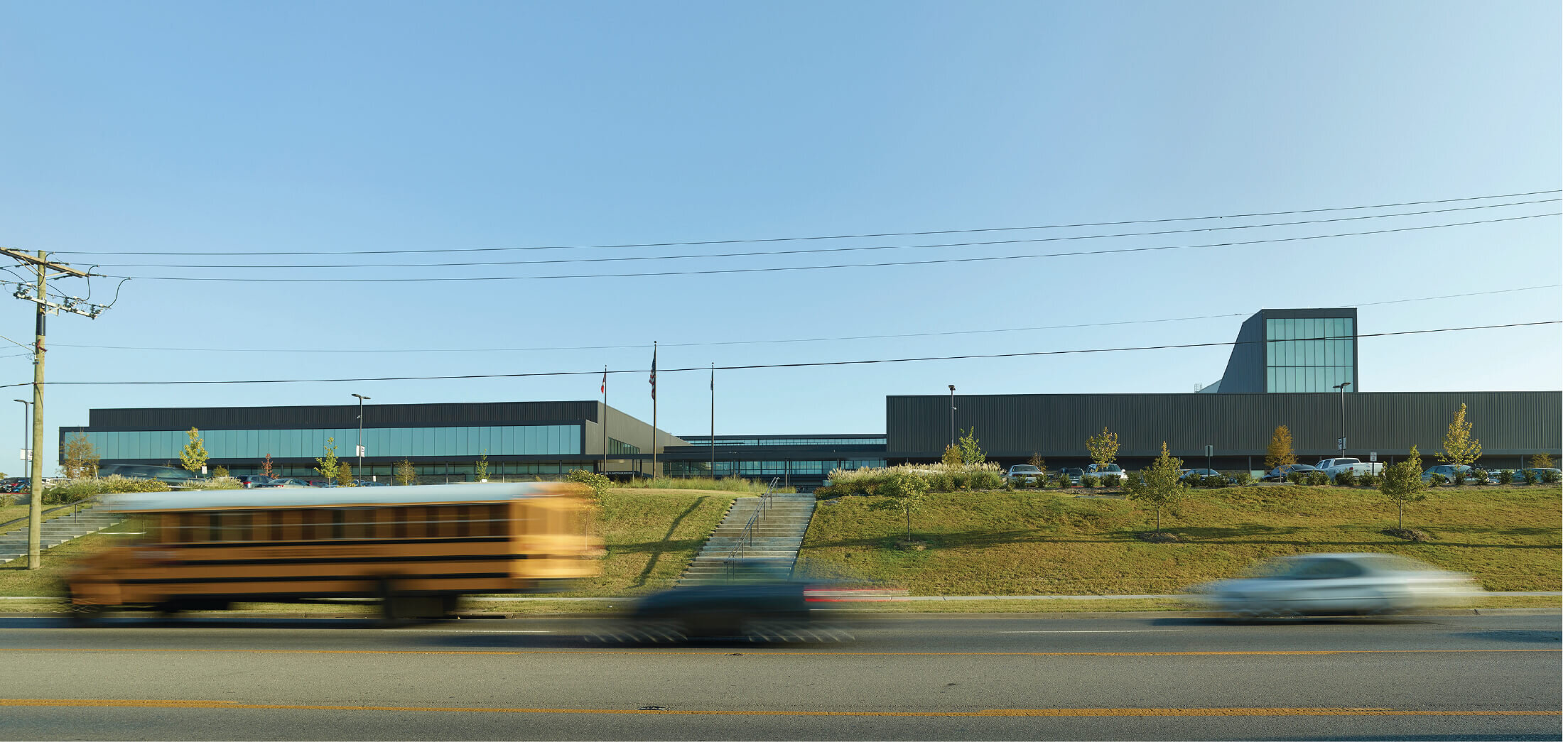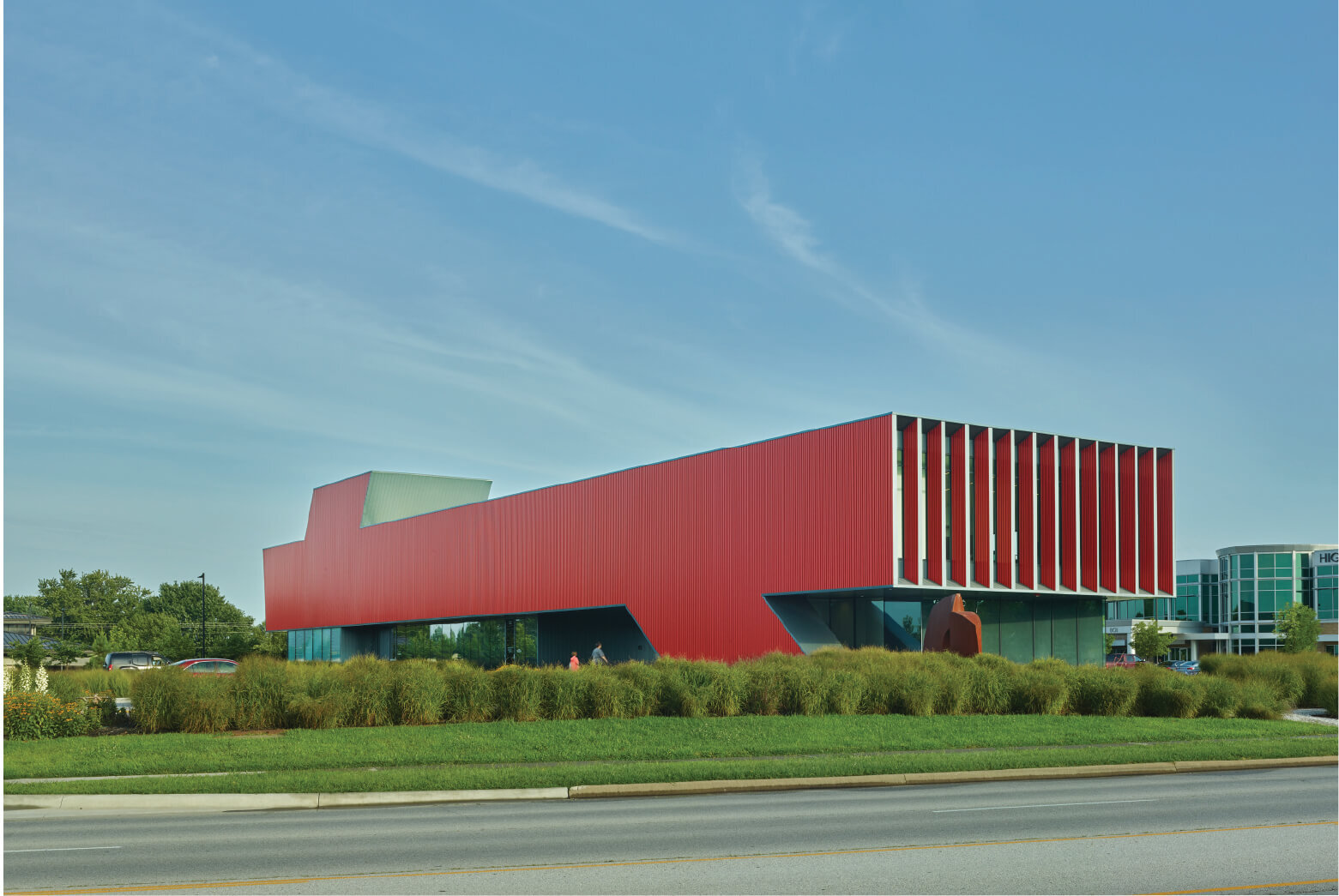
Marlon Blackwell Architects
Fayetteville, Arkansas
The karst topography of the Ozark Plateau, the water-soluble Arkansas landscape of thin soil and scruffy forest over limestone and dolomite, was formed by the deposition of remnants of life in an ocean found here before its waters receded more than 300 million years ago. A natural merzbau, the landscape is best understood in profile and section, from the caverns and cavities carved by acidic subsurface water to the profile of postcard-ready Hawksbill Crag. Many species endemic today have evolved within the window of a mere few million years in the splash of fresh water that remains, including the remarkable Ozark Hellbender, a large salamander suffering acutely a more toxic world. The Hell Creek Cave crayfish, blind and without pigment, and the elusive Ivory-billed Woodpecker of the Arkansas Delta are indicator species for the natural world in rapid decline, but offer hope and thematic possibilities for an architecture of the Ozarks as well. My architectures inhabit the world as do these creatures, in the tight specificity of immediate conditions and a local culture resistant to the weight of the world that is upon them.
In my practice as well as in my teaching, and in a proverbial small pond in which it is my ambition to balance the singular and the universal, the elemental and the fundamental.
Arkansas is a place with the best and the worst of architectural vernaculars, and a landscape at least as well suited to growing architecture as for anything agricultural. If globalization equates with the most virulent forms of urbanization, Arkansas remains mostly allied with the more prosaic form associated with the big box, the strip mall and franchised commerce, all loosely configured. Architecture here is most often of modest means, with perhaps a little extra whenever a little extra is available. Sometimes even the smallest of churches deserves a dome, however modest, as did our small Saint Nicholas Eastern Orthodox Church in Springdale. Flipped face down and lifted up, a large satellite television dish became a dome, sacred space of the simplest of means obtained in a straight trade for a case of beer. Something reverent borne of irreverence, found in the distance between fundamental and fundamentalism. In a culture and place that gravitate toward both, I strive for an architecture built upon forms drawn from nature, invoking them as analogs, and from inspiration by themes from the particulars of the culture referred to by Greil Marcus as “the old, weird America,” gently transgressive rather than autonomous, and resistant to commodification, bright lights and LEDs.
Identity can be elusive here, a tenuous thing in a place that is tight against several of the regions of North America most commonly understood as such, or over-lapping slightly with a couple. With no clear identification with any one of them, Arkansas may be the 7th floor of America, and perhaps a bit like the portal to John Malkovich’s brain. The installation proposed by Marlon Blackwell Architect takes the essential premise from Spike Jonze’s film, to introduce the profiles of our architecture and the setting in which we practice. From the material surface to the silhouette, in models and drawings, an architecture of elements, of profile, of the Ozark Plateau.
—Figures & Types by david buege
